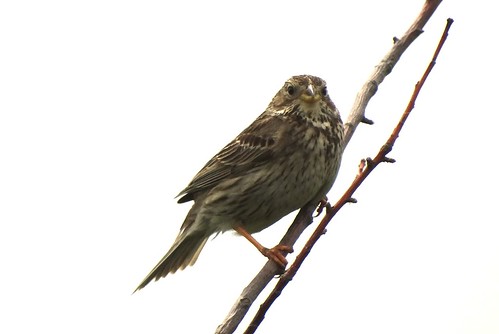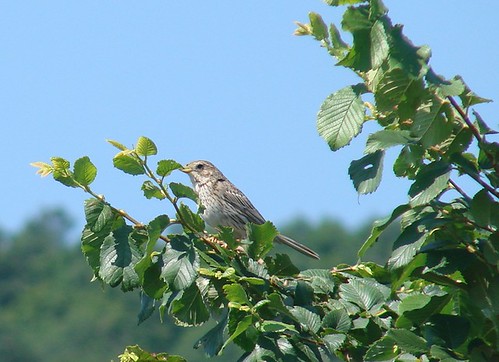Who could not love a face like that?
Gone from much of its northern range, the fist-sized Corn Bunting is still hearteningly common on the roadsides of Provence, where its sizzling buzz penetrates van windows and birders’ hearts alike.
This species’ English names are blander than bland. Long known as the Common Bunting (would that that were still the case in England!), the bird now bears a name reflecting its historical fondness for cropland. More than 2,000 years ago, the Roman name miliaria was given a similar explanation:
Miliariae have their name from their food, because they grow fat on millet.
In those days, not all bird lovers were content to wait for the “millet buntings” to plump up by their own efforts. Varro writes that he has seen them fed in captivity, along with thrushes and quails, and that thus fattened for the table, they “go for a good price” in the markets.
Perhaps surprisingly, Jean Crespon, writing in the middle of the nineteenth century in Nîmes, says nothing about eating these birds, probably because, as he notes,
it is difficult to keep them in cages; they break their heads against the bars, and if they survive, it is quite rare to hear them actually sing.
Crespon calls this species the “bruant proyer,” a venerable French name dating to at least the fourteenth century and obviously related to words like pré and prairie (and, ultimately, Latin pratum). Strangely, Buffon derives “proyer” from the bird’s song, and declares himself
surprised that this species was not named “bunting of the fields,” as it rarely leaves the meadows during the warmer time of the year.
Even Buffon dozes, I suppose. The various Provençal names for the species — “térido,” “terlin,” “teri-teri,” “chi-perdris,” “chinchourla” — probably are echoic, though none of them does justice to the hissing sibilance of the real thing, which (I will point out again) you can hear and enjoy this coming April on my Birds and Art tour. Hope to see you then.



